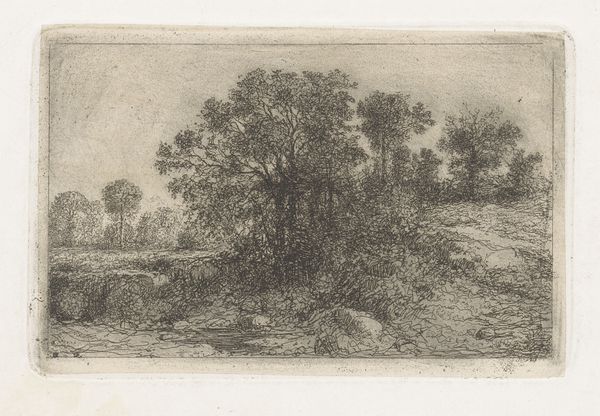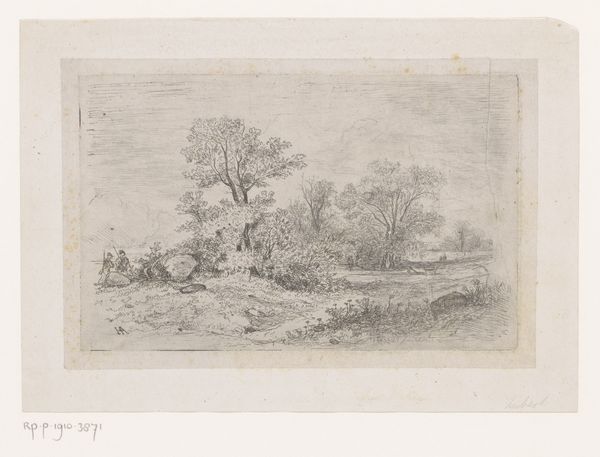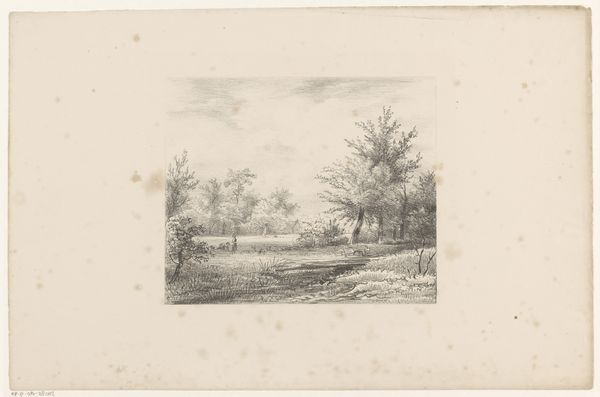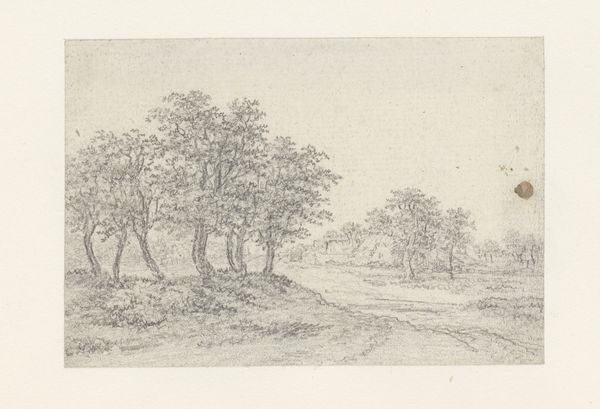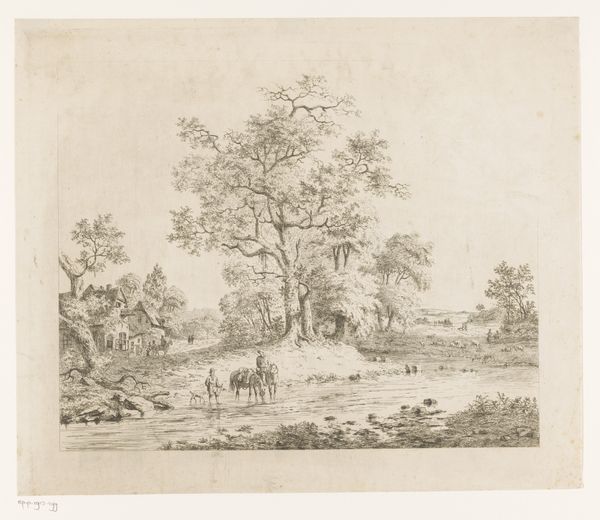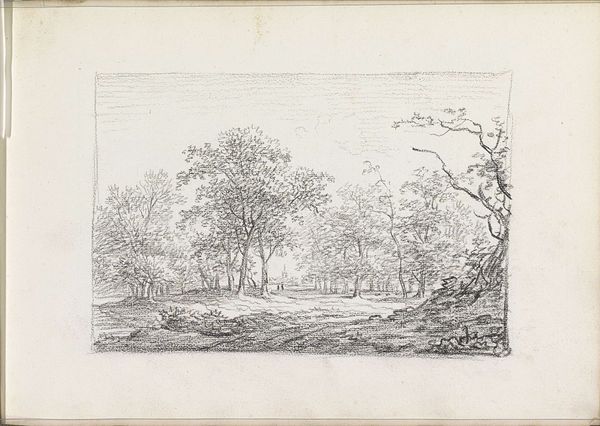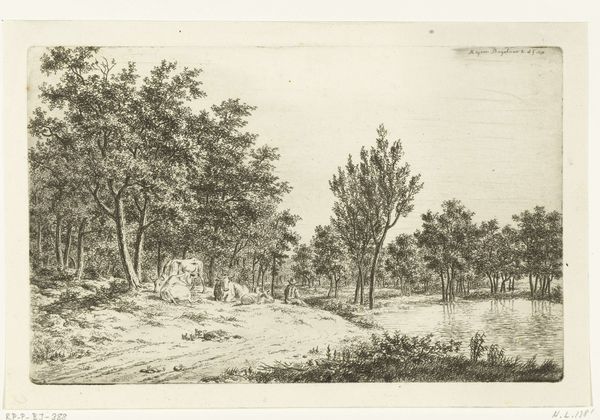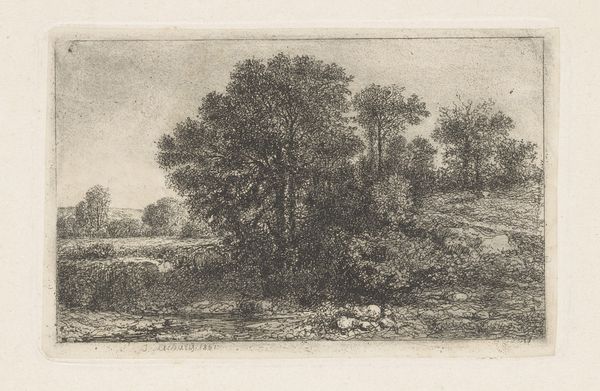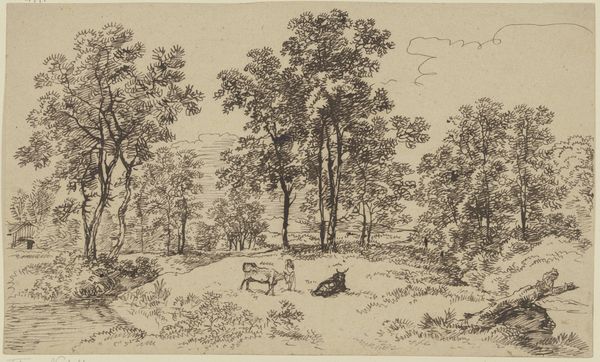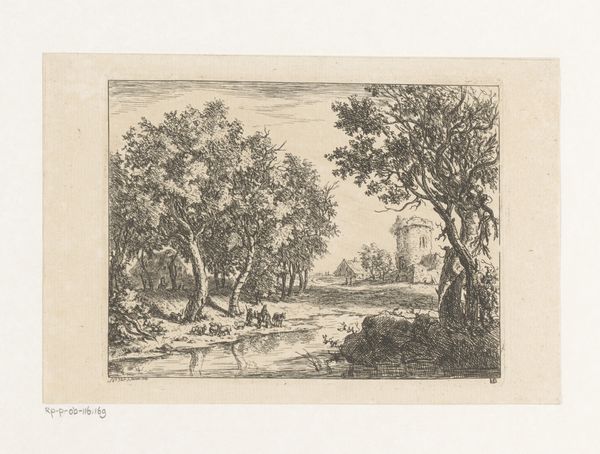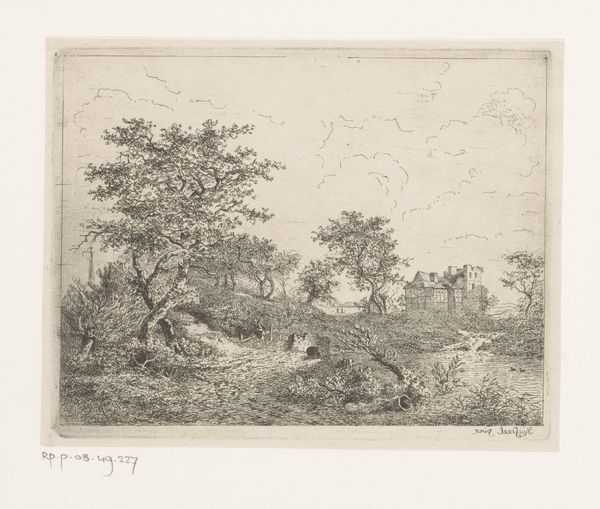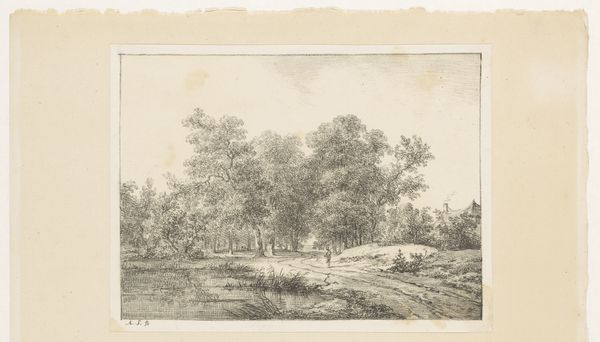
print, etching
# print
#
etching
#
landscape
#
etching
#
romanticism
Dimensions: height 104 mm, width 154 mm
Copyright: Rijks Museum: Open Domain
Curator: Looking at this artwork, I'm struck by how dreamlike and ethereal it feels, like a faded memory trying to resurface. Editor: That's interesting. Actually, that dreamy quality makes sense when you realize that we’re looking at an etching entitled *Boslandschap aan een rivier,* or *Wooded Landscape by a River* created in 1847 by Jean Théodore Joseph Linnig. There is a lot of space between things to look through. Curator: Absolutely! As an etching, it lacks the colour and vividness we often associate with landscape painting. Instead, the subtle monochromatic tones evoke a sense of nostalgia. The lines of the trees act as lenses between foreground and background. Notice also the tiny figures on the horizon. Editor: Yes, the figures feel very symbolic. The work appears to follow archetypal landscape imagery where figures inhabit or journey through sublime Nature. Curator: The human form is presented humbly against Nature. In Jungian psychology, for example, wooded areas and water traditionally are potent signifiers for the unconscious. What do you notice about the medium itself? Does etching impact how we perceive nature here? Editor: I love that thought about the unconscious! And yes, etching really shapes how we view this landscape. The fineness of the lines is stunning—the figures feel a little faded like the landscape they're journeying through. Does it seem as though a time is coming to an end? I mean, it's very skillfully done and precise, yet it evokes that feeling of impermanence beautifully. Like it’s just *there*. Curator: A good read of the picture. In his "Essay on Landscape," the geographer Alexander von Humbolt reflected on the different ways that the landscape presents itself symbolically to the mind—a landscape of memory or premonition as you say. A psychological space too. Editor: Exactly, that's what resonates with me. The overall effect reminds me of an old photograph, a faded image hinting at a world that existed, yet can only ever be half-recalled. This piece really made me think about how fleeting moments can be transformed into timeless symbols through art. Curator: Well said. It seems this landscape whispers to each of us a slightly different, but resonant, story about time, memory, and nature’s enduring symbolism.
Comments
No comments
Be the first to comment and join the conversation on the ultimate creative platform.
